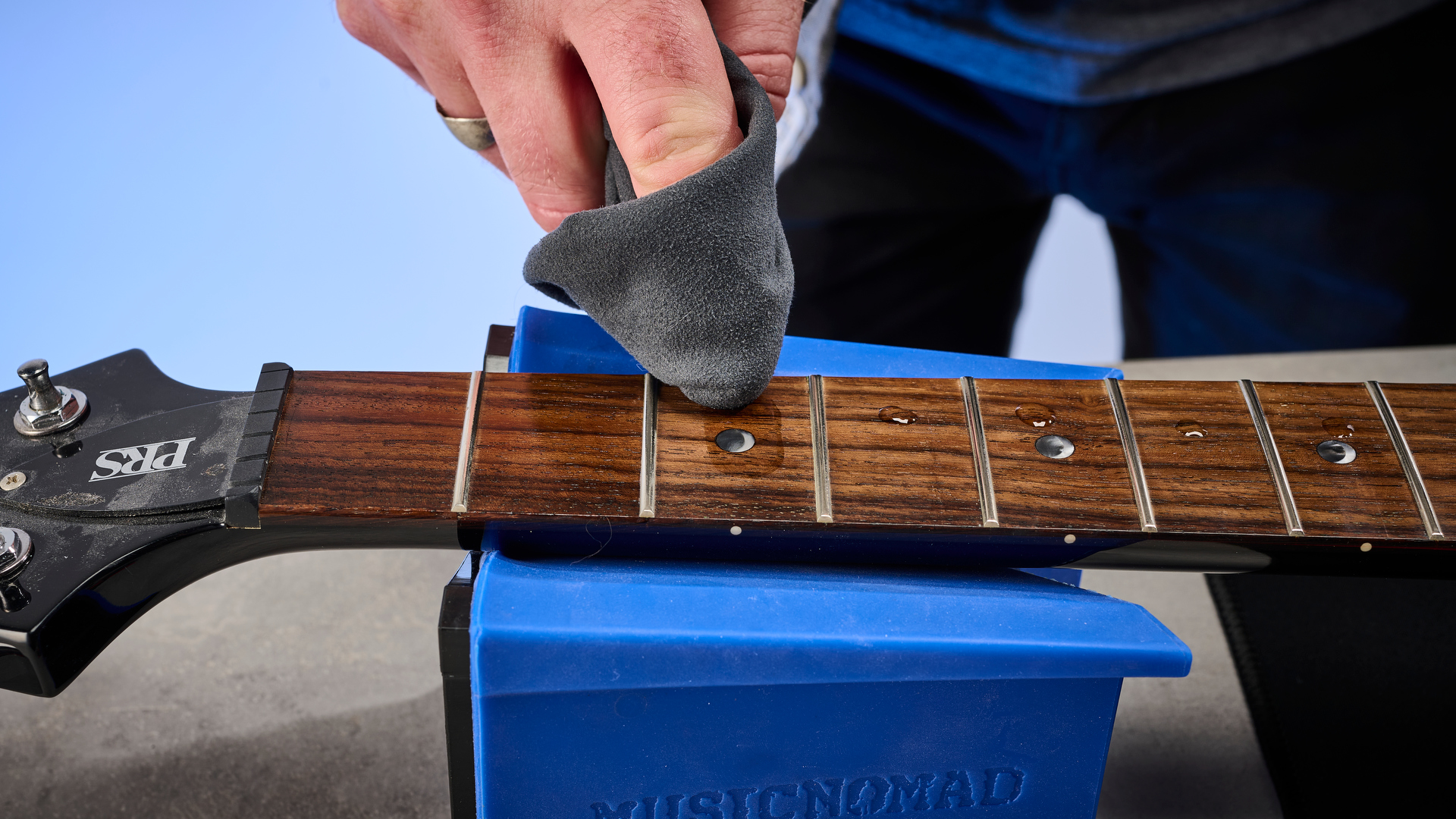
Any wood that comes into regular contact with foreign bodies needs to be kept clean, conditioned and protected – your guitar's fingerboard is no different. But I've read some conflicting advice when it comes to the best ways to look after different types of fretboard for acoustic and electric guitars – including rosewood, laurel, maple, pau ferro and ebony. It's time to simplify and demystify this essential piece of guitar maintenance.
As with a lot of things in the world of guitars, there isn't one correct answer. But we need to understand what substances perform different functions for our fretboards before we can experience the satisfaction of seeing and feeling them at their best.

Firstly, there are two main types of fingerboard wood; finish and unfinished. An unfinished fretboard has no protective lacquer over the wood and examples include rosewood, pau ferro, laurel, walnut and ebony.
Finished fretboards tend to be maple – though unsealed maple 'boards do exist. The finished type will only need cleaning and no conditioning because they have a thin lacquer that acts as the protective layer to keep things like sweat from seeping into the wood.
So before you condition a guitar's unfinished fingerboard, you need to clean it first. And a seemingly unlikely substance is good as a starting point.
1. Naphtha is a cleanser
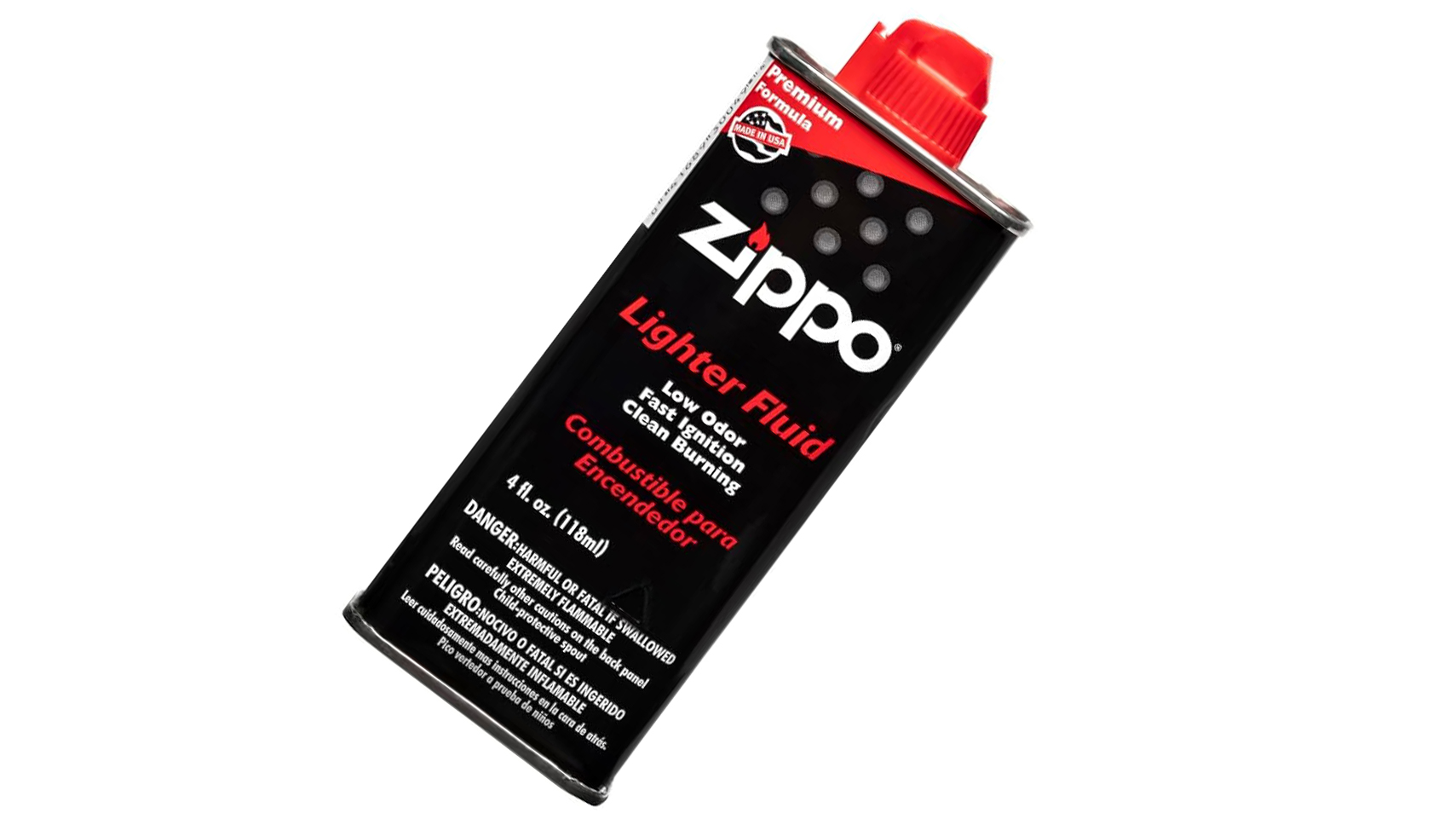
Guitar techs first recommended Naphtha (petroleum distillate and most commonly referred to as lighter fluid) to me and I was initially confused. Surely a flammable substance and wood are a hazardous pairing?
It can clean finger oils out of your wood by breaking them down before it evaporates. This process will often make your unfinished dark fretboard wood look dry and even slightly opaque after application to work its magic. Don't worry – it's not a conditioner and this is supposed to happen. It's simply removing the foreign bodies in your 'board before you use an oil conditioner to rehydrate it.
It's also a safe body cleaner for nitrocellulose finishes when used sparingly – and like rubbing alcohol, it's good for removing residue from stickers that you might have regretted customising your guitar with.
2. Lemon oil isn't what you might think it is
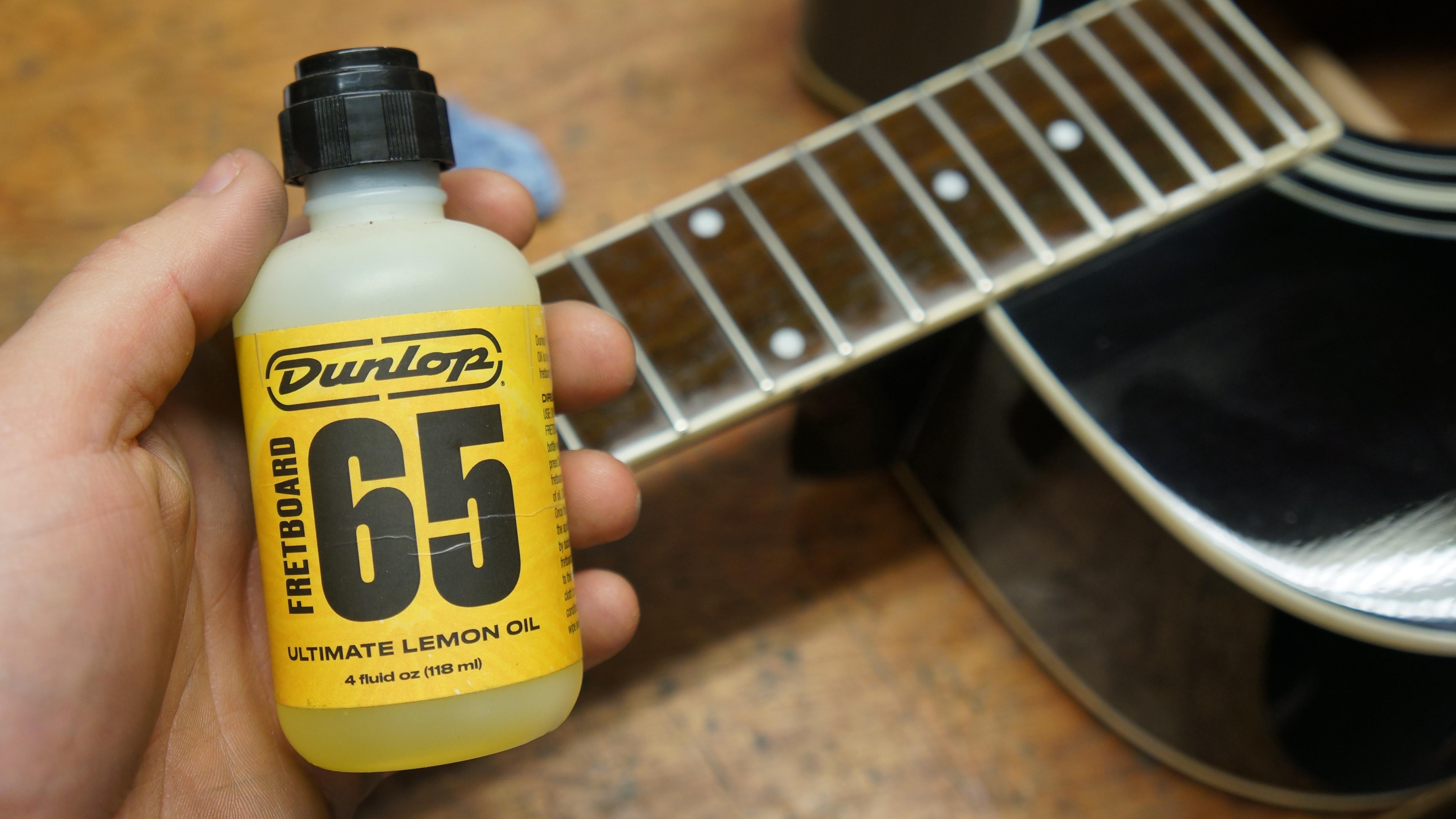
Lemon oil is what comes up most frequently when the subject of fretboard care is mentioned. Some people even advise against using it. But if you are using it, is it a cleaner or a conditioner? Taylor Guitars co-founder Bob Taylor suggests it's both.
"I’d have no worries about using lemon oil on my fretboard," he stated in a Taylor Q&A with regards to acoustic guitars. "It’s safe. Use it only on the unfinished wood like the fretboard and bridge. The wood can dry out over time, and an oil like this, or linseed oil, or even mineral oil, can protect the wood and beautify it as well.
"Don’t overdo it," added Taylor. "Once a fretboard has been oiled a few times, you can slow down the frequency. The nice thing about lemon oil is that it cleans while it oils, so it won’t build up as easily, but be sparing. I don’t think your fretboard will need oiling more than twice a year, and eventually, once a year."
But a lot of the confusion around guitar lemon oil is due to assumptions about what it actually is. Despite the name, most guitar lemon oil is actualy often more mineral oil with less actual lemon oil than you'd expect. It's more for scent.
So it's actually mineral oil that's the more effective conditioner. This helps to break up the kind of unwanted oils from our hands, for the cloth to wipe away.
I like to do a clean, then add a little more on a second sweep over for a little conditioning – removing any excess with the cloth. And if you notice a guitar lemon oil that's actually yellow coloured, it's because artificial colouring has been used. This can actually help enhance your fretboard's "warm tone", as Gibson Master Luthier Jim DeCola points out in the video above.
3. Other alternatives are available for cleaning and conditioning
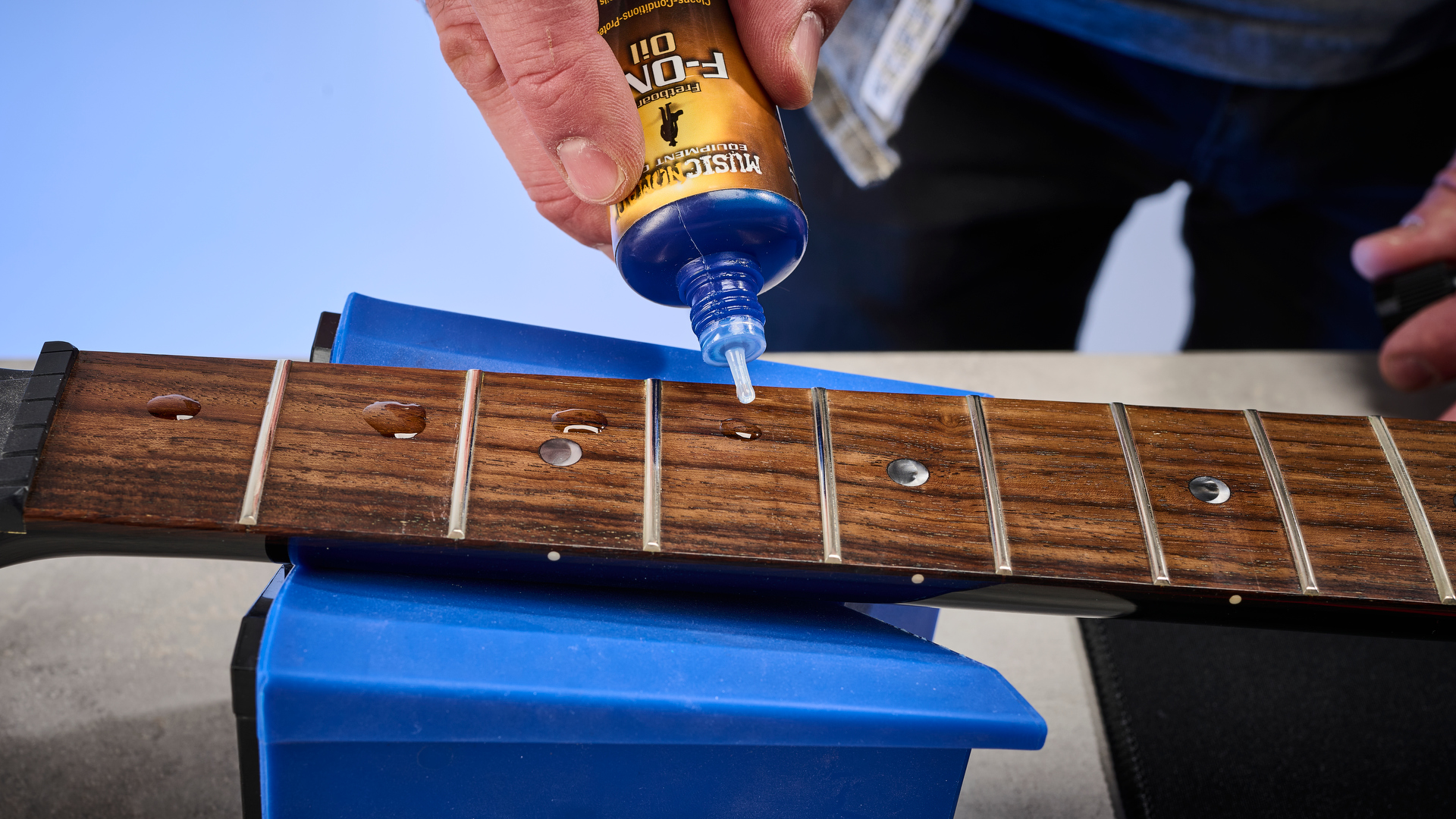
Aside from lemon oil, some of the big names in guitar accessories have their own takes on the ideal recipe for fretboard conditioner. MusicNomad F-One Oil is a cleaner and conditioner to be used on unfinished fretboards. It uses natural seed and tree oils and it smells nice too, I have to say!
Elsewhere, Daddario, Taylor, PRS and Dunlop all have their own takes on fretboard conditioning oil too.
4. Pick the right cloth for the job
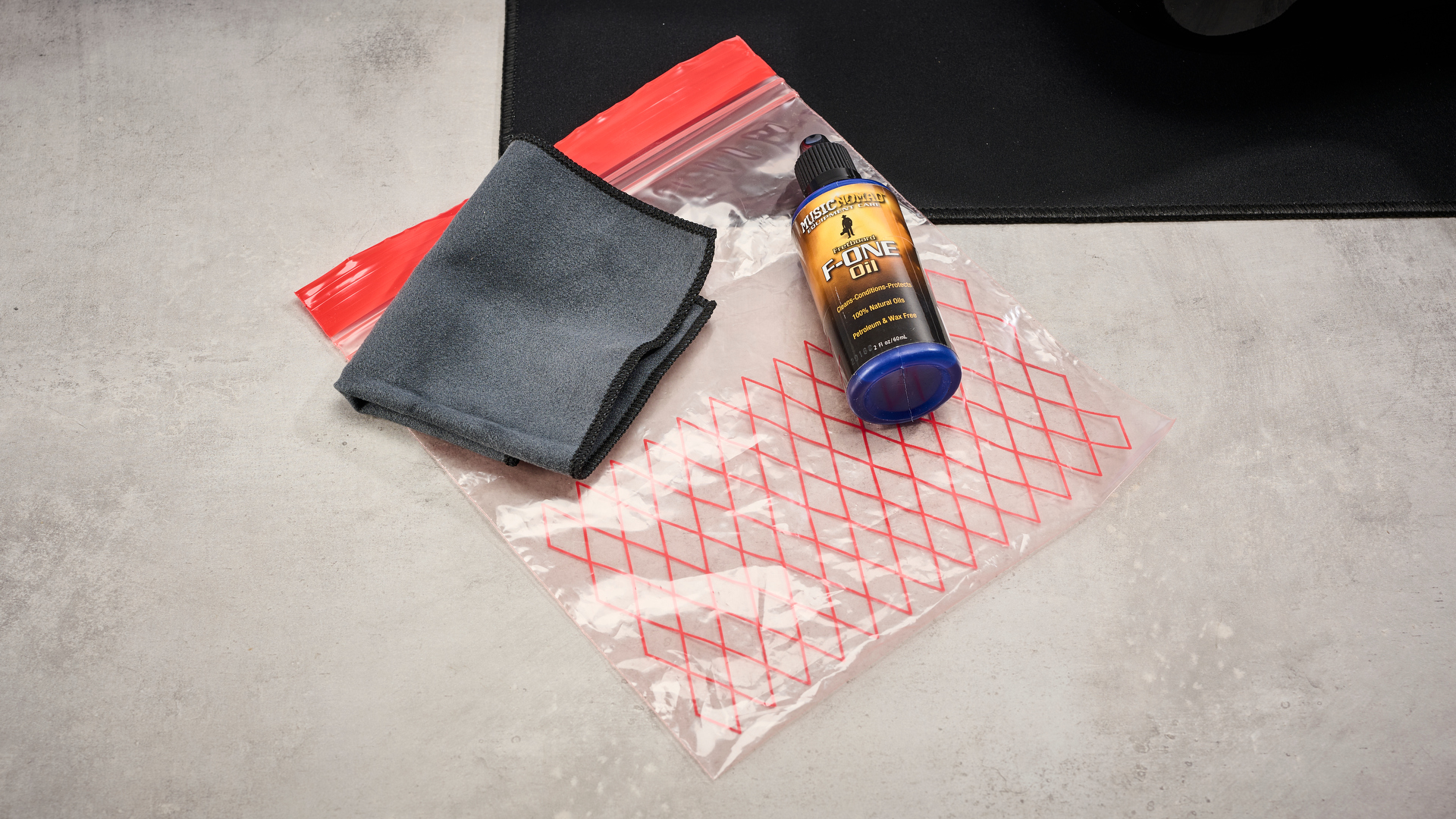
In my article on how to clean your guitar, I pointed out why two different types of cloth are good for specific jobs when it comes to applying polishes and creams to the guitar. And this idea extends to the fretboard.
You only need a small dab of oil on each fret, then use a microfibre short pile lint-free cloth to move it around the surface of the fretboard without the cloth absorbing too much, too soon and before the oil can seep into the unfinished wood. Then use a different part of the cloth to remove any excess oil after a couple of minutes.
5. Don't forget your toothbrush!
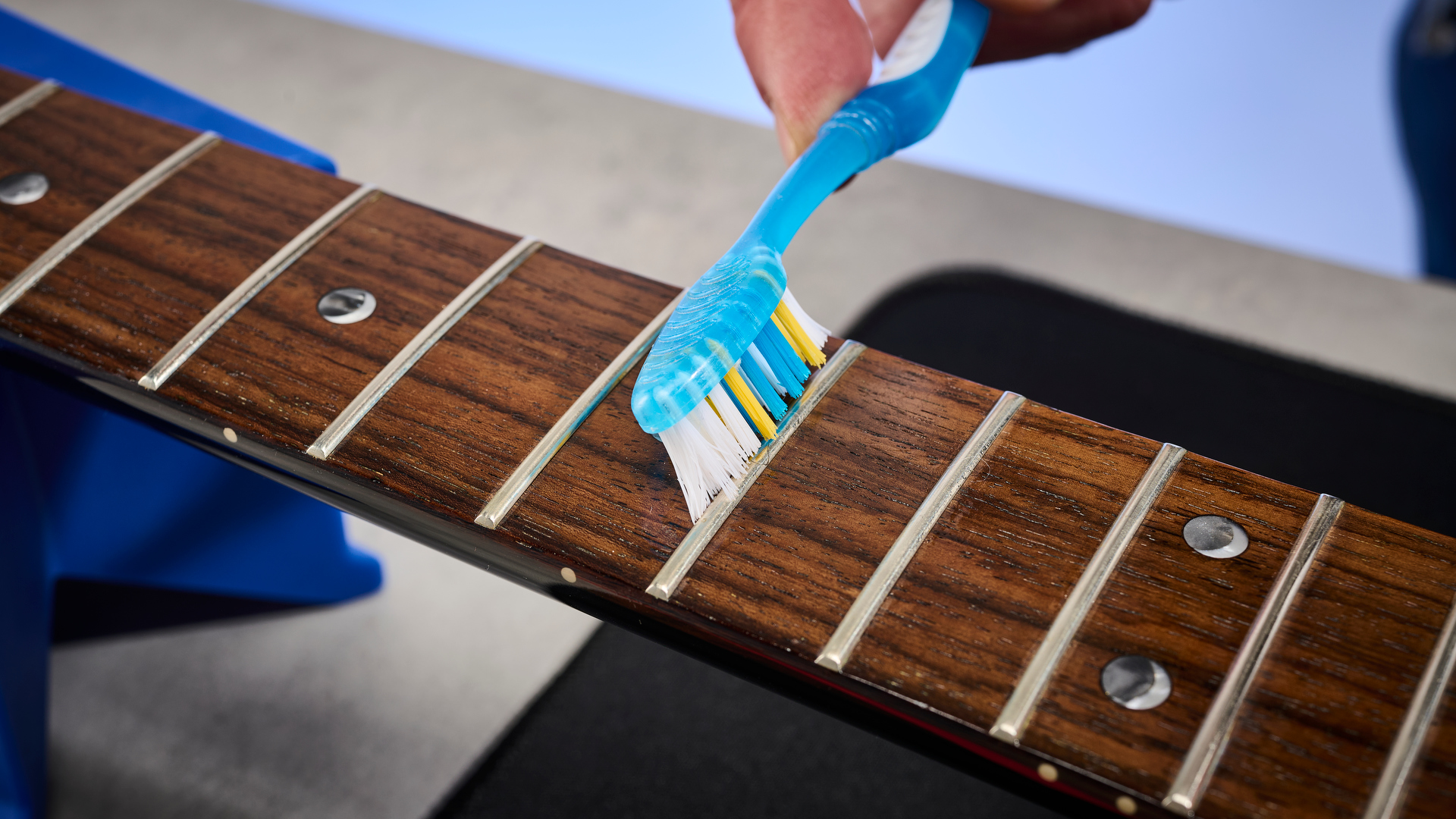
Using your cloth to get into the edges of the frets and clean where grime can gather usually does the job, but for fingerboards that have been neglected for a while (and might be due a fret polish as the next step in a proper spring clean), a clean toothbrush can help with a little oil applied to it.
6. Maple needs love too
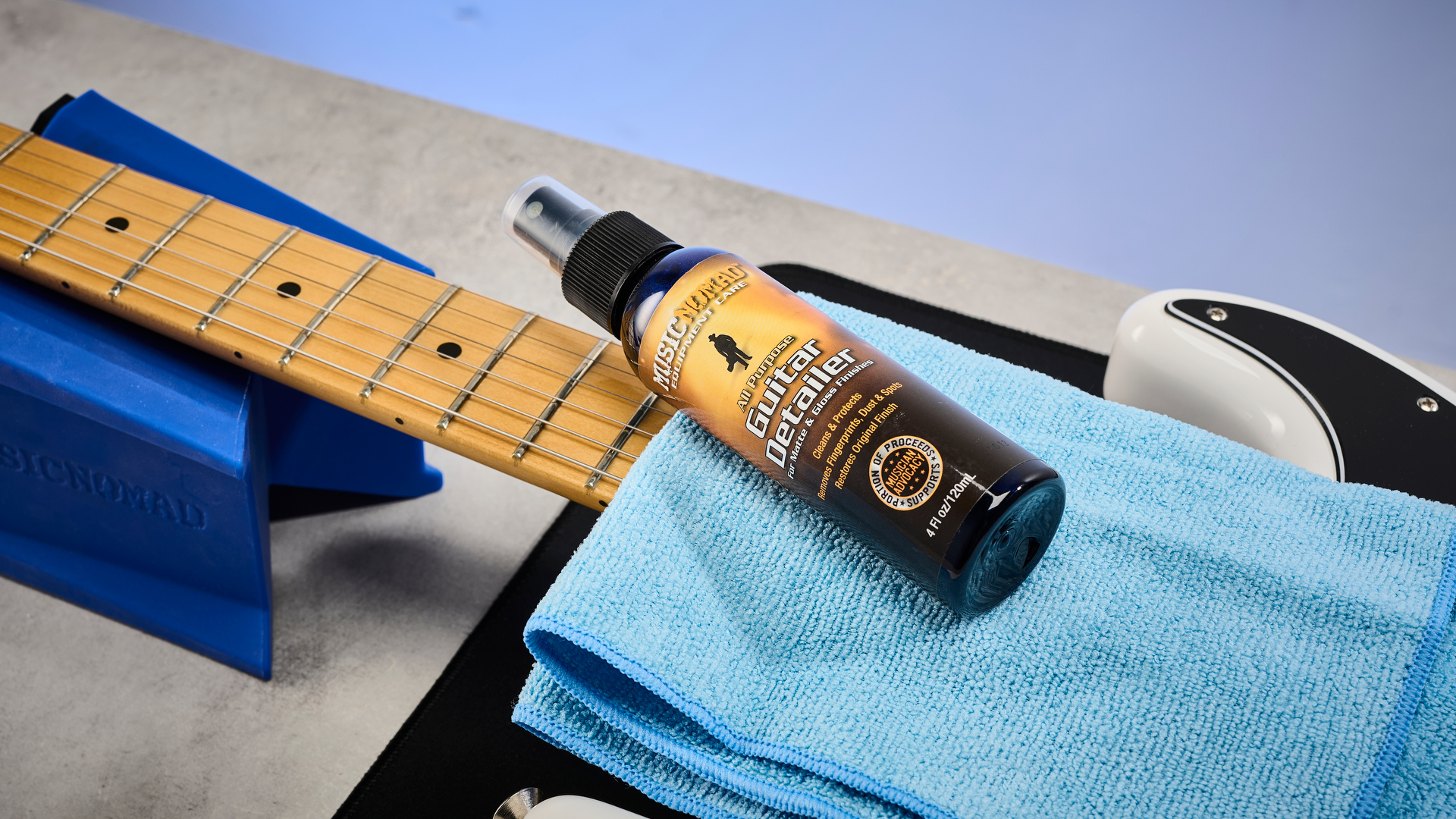
Finished (sealed) maple fingerboards don't need conditioning but are still due a clean every free months. Use your clean microfibre cloth with guitar cleaner to wipe away any grime from the 'board that may shorten the life of your strings.
I like to use MusicNomad's Guitar Detailer, because it can also be used on satin and matte body finishes too, plus its anti-static formula helps to repel dust and is has UV protectants to help sun damage for those summer days when your guitar is sitting on the stand.
- For more information on MusicNomad guitar maintenance and cleaning products, check out musicnomadcare.com, Thomann and Sweetwater.







